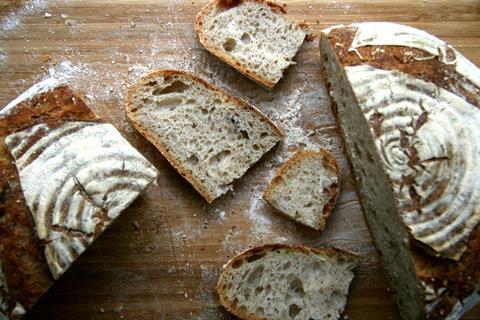
The Association of Bakery Ingredient Manufacturers (ABIM) has published the first-ever code of practice for sourdough – the result of five years’ work.
The document, unveiled yesterday (31 January), sets out suggested definitions for the labelling and marketing of sourdough bread products – which “must not mislead the consumer as to the true nature of the product”.
Unless a product meets one of the three definitions in the guidelines, labelling and marketing “should be restricted to describing the sourdough ingredient and should not imply that the product has been made using a sourdough process”, according to the new code.
‘Sourdough (product name)’ may be used to label a product in which live/active sourdough is the principal leavening agent. It may be made with the addition of up to 0.2% compressed bakers’ yeast.
‘(Product name) with sourdough’, meanwhile, refers to “a product made with live/active sourdough, and/or inactive/deactivated/devitalised sourdough, where commercial bakers’ yeast has been used as the principal leavening agent in the final dough and which may also contain permitted additives”.
Finally, ‘sourdough flavour (product name)’ is defined by the guidelines as “a product made with live and/or inactive/deactivated/devitalised sourdough, where the sourdough itself contains raw materials” that have been added to increase shelf life or enhance acidity, flavour and/or aroma.
The ABIM has worked for five years – with members and shareholders such as the Federation of Bakers and the Craft Bakers Association – to “unite the bakery sector behind shared terms for sourdough that allow each baker to express themselves freely while making it clear to consumers what’s on offer”, said ABIM president James Slater.
“This code of practice will play an important role in helping to make better, more delicious bread for all.”
The new guidelines, however, have drawn the ire of the Real Bread Campaign. “The codes’ authors came late to the sourdough game but, rather than playing according to practices established over more than four decades by the UK custodians of the craft, they decided to write their own rules,” said co-ordinator Chris Young.
The ABIM guidelines were “an insult to those Real Bread bakers who make genuine sourdough and to people who will hand over their hard-earned cash,” he added. “There’s nothing wrong with using baker’s yeast, either on its own or in combination with a sourdough starter. Just don’t call it sourdough.”
However, executive head of Bertinet Bakery Anomarel Ogen said the guidelines were “a positive stepping-stone towards regulations that ensure consumers get the true sourdough bread they are paying for”.
Despite this, “some of the product attributes descriptions need to be reviewed further,” said Ogen.
“We are fundamentally against the use of commercial yeast in a true sourdough product in any quantity, and we would like to see that removed in future iterations of this decree; nor do we use improvers of any sort.”



















No comments yet